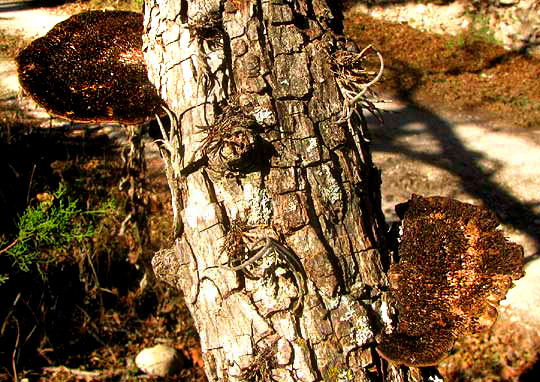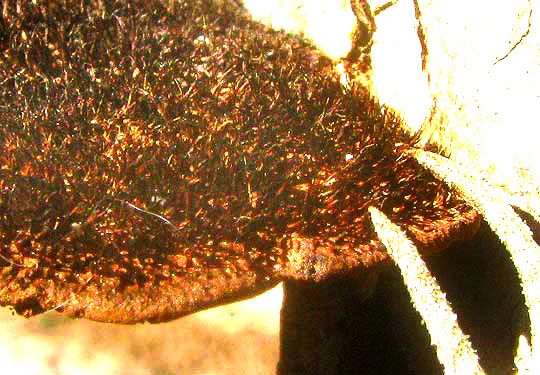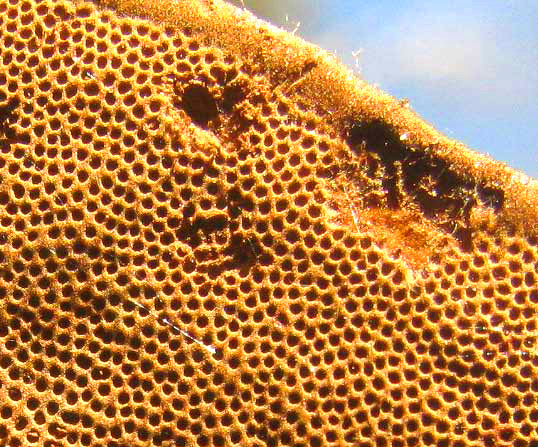Excerpts from Jim Conrad's
Naturalist Newsletter
from the December 15, 2013 Newsletter issued from the Frio Canyon Nature Education Center in the valley of the Dry Frio River in northern Uvalde County, southwestern Texas, on the southern border of the Edwards Plateau; elevation ~1750m (~5750 ft); N29.62°, W99.86°; USA
HAIRY HEXAGONIA
A dead tree trunk leaned against a living tree. It'd been leaning there long enough for a certain kind of saucer-sized shelf fungus to grow horizontally with the landscape, not tilted with the trunk. The shelf fungus was unusual because its top was covered with blackish hairs. Two of the leathery, stiff, black-topped fungi emerging from opposite sides of the leaning dead trunk are shown below:

A close-up featuring the stiff hairs, which were up to ¼-inch tall (6mm), is shown below:

The fungus was the kind whose spores are released below not from papery gills, but from holes, or pores, in the fungus's body. You can see the pores below:

The holes tell us the fungus is a member of the Polypore Family, the Polyporaceae.
On the Internet the usual identification keys didn't help with this fungus, so apparently this was one of the more uncommon species. Finally I had to resort to browsing through hundreds of images using the Google image search function and key words such as "shelf fungus black top hairy."
However, the process worked. Our shaggy fungus is uncommon enough to have no common name. It's HEXAGONIA HYDNOIDES, which though uncommon is widely distributed, mostly reported from warm and hot regions of the Americas and tropical Africa. In the US mainly it occurs from Florida to Texas.
It's amazing how little information is available about the species. I read that the hairs eventually fall off, leaving a smooth top, but that's about it. Apparently it hasn't been studied in detail at all. Therefore, maybe our merely documenting its presence here will make a mycology researcher happy someday.